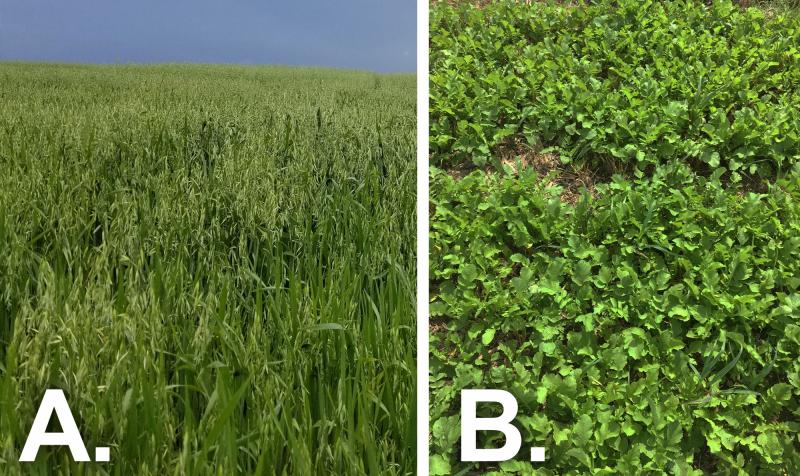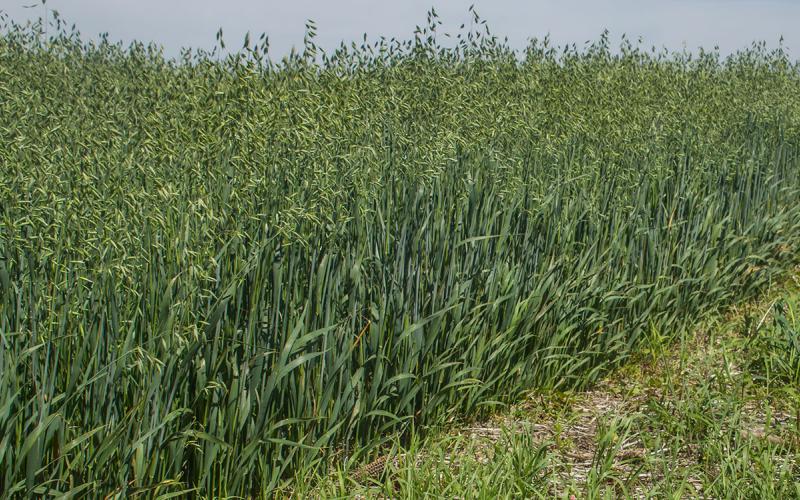Originally written by Gared Shaffer, former SDSU Extension Weeds Field Specialist.

After oats have been harvested, options exist to keep a living root in the soil. This can be done through growing cover crops. In 2018 an on-farm trial was preformed near Salem, South Dakota to observe how cover crops grown after oats would germinate after common herbicides had been applied. It was found that there were no significant differences between the treatments of different oat herbicides, even though there were numerical differences between the treatments. This research suggests that the cover crops mentioned in the Table 1 may be grown for ground cover and some harvested for forage through grazing or haying. To determine how the cover crop should be used after planting, the producer must follow the herbicide label. The data concluded that other factors, besides herbicides were the main cause of a decline in cover crop germination and growth across treatments.
| Herbicide Trade Name |
|
|
|
|
|
|
flower |
|
|
|
||||||||
| Check (weed & herbicide free) |
|
|
|
|
|
|
|
|
| Cleansweep M |
|
|
|
|
|
|
|
|
| Starane Flex |
|
|
|
|
|
|
|
|
| Starane NXT |
|
|
|
|
|
|
|
|
| Starane Ultra |
|
|
|
|
|
|
|
|
| Stinger |
|
|
|
|
|
|
|
|
| Weld |
|
|
|
|
|
|
|
|
| WideMatch |
|
|
|
|
|
|
|
|
| Herbicides sprayed 6-13-18 | ||||||||
| Oats harvested 8-1-18 | ||||||||
| Cover Crops Drilled 8-8-18 | ||||||||

